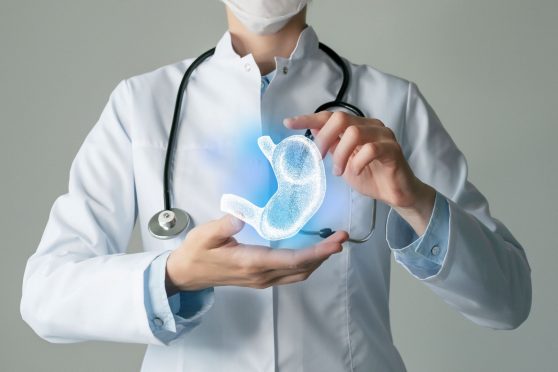Even before you start to eat, the digestive process begins. Your stomach starts to pump out acid in preparation for the meal you are about to consume, and the muscles of the stomach and rest of the digestive tract ready themselves to get things “moving.” This is known as gastrointestinal motility and it is these, often strong, muscular contractions that propel food through the digestive tract.
But for about five million people in the United States, a condition called gastroparesis means that the stomach’s motility is slowed down or doesn’t work at all, preventing the stomach from emptying properly.
Gastroparesis can cause nausea, vomiting, abdominal bloating and pain. It can also create problems with blood sugar levels, particularly in people with diabetes, and adequate nutrition. There are more than 50 recognized causes of this condition, including diabetes, post-surgical complications, certain medications such as opioid pain relievers and some antidepressants, as well as those for high blood pressure and allergies.
Many people with gastroparesis don’t have any noticeable or severe signs and symptoms but the most common ones include:
- Nausea, with or without vomiting.
- Abdominal bloating.
- Abdominal pain.
- A feeling of fullness after eating just a small amount.
- Vomiting food eaten several hours earlier.
- Acid reflux.
- Changes in blood sugar levels (or difficult to control, in diabetes).
- Poor appetite.
- Weight loss and malnutrition.
Amir Masoud, MD, Medical Co-director of the Hartford HealthCare Neurogastroenterology & Motility Center, notes that sometimes a diagnosis of gastroparesis is made when the issue is somewhat simpler.
“I think a lot of times gastroparesis may just be a bystander,” he said. “We know that the stomach doesn’t empty at the same rate depending on what we eat. So, if I eat a big plate of spaghetti versus a salad, everything changes the way that the stomach empties because it’s not a timer that goes off and says, ‘OK, now I have to be empty.’ I think that we have a little bit of a simplistic view towards gastroparesis in general, and we’re misdiagnosing a lot of patients by calling them gastroparetics when it can be simply functional.”
Another example Dr. Masoud gives is of a patient who has severe constipation. “Sometimes there’s a significant overlap with constipation. We know that patients with severe constipation can have a secondary slowing of the stomach or proximal foregut. I say, ‘I’m going to treat your constipation first, get your bowels moving a little bit more regularly, then we’ll talk about seeing if the stomach is still a problem’ because we know that the gastrointestinal tract, each part of it, is not functioning in isolation. They all communicate with each other. It’s all through feedback mechanisms. A slow end of the line leads to a slow start of the line, so it’s very important to think of the patient as a whole and not take symptoms, or tests, in isolation.”
There are several tests to help diagnose gastroparesis and rule out conditions that may cause similar symptoms. Gastric emptying tests are done to see how fast the stomach empties its contents. These tests include:
Scintigraphy. This is the most commonly used test when making a diagnosis of gastroparesis and is considered the “gold standard.” It involves eating a light meal, such as eggs and toast, that contains a small amount of radioactive material. A scanner that detects the movement of the radioactive material is placed over your abdomen to monitor the rate at which food leaves your stomach. It is typically done over a four-hour period.
Breath tests. For these tests, you would consume a solid or liquid food that contains a substance that your body absorbs. Eventually, the substance can be detected in your breath. Samples of your breath are collected over a few hours and the amount of the substance in these samples is measured. The test can show how fast your stomach empties after consuming food by measuring the amount of the substance in your breath over the study time period.
Dr. Masoud said that while the four-hour gastric emptying test is most commonly used, there is a newer option. Called SmartPill, it is “a whole-gut transit study, which among other parts of the gastrointestinal tract, can measure the gastric emptying time. A real advantage is the ability to gauge the transit time in other parts of the gastrointestinal. Often gastroparesis isn’t an isolated problem: sometimes it can be in conjunction with small bowel dysmotility or even colonic inertia, and sometimes it’s very, very important for us to assess those things in tandem.”



